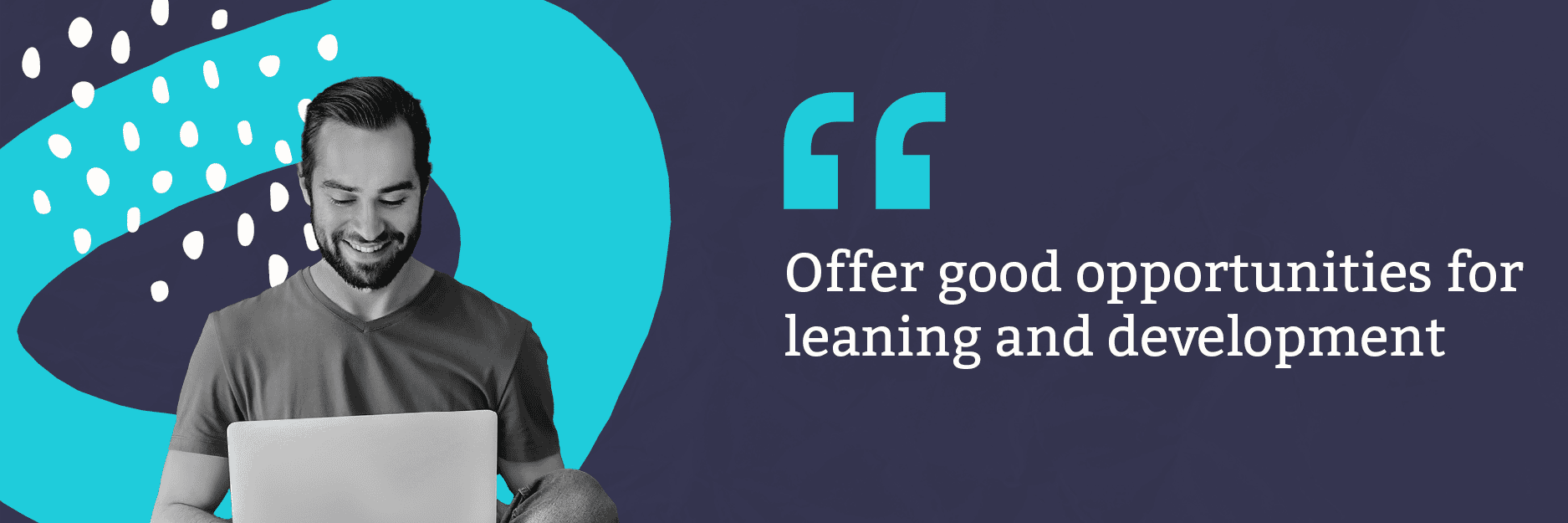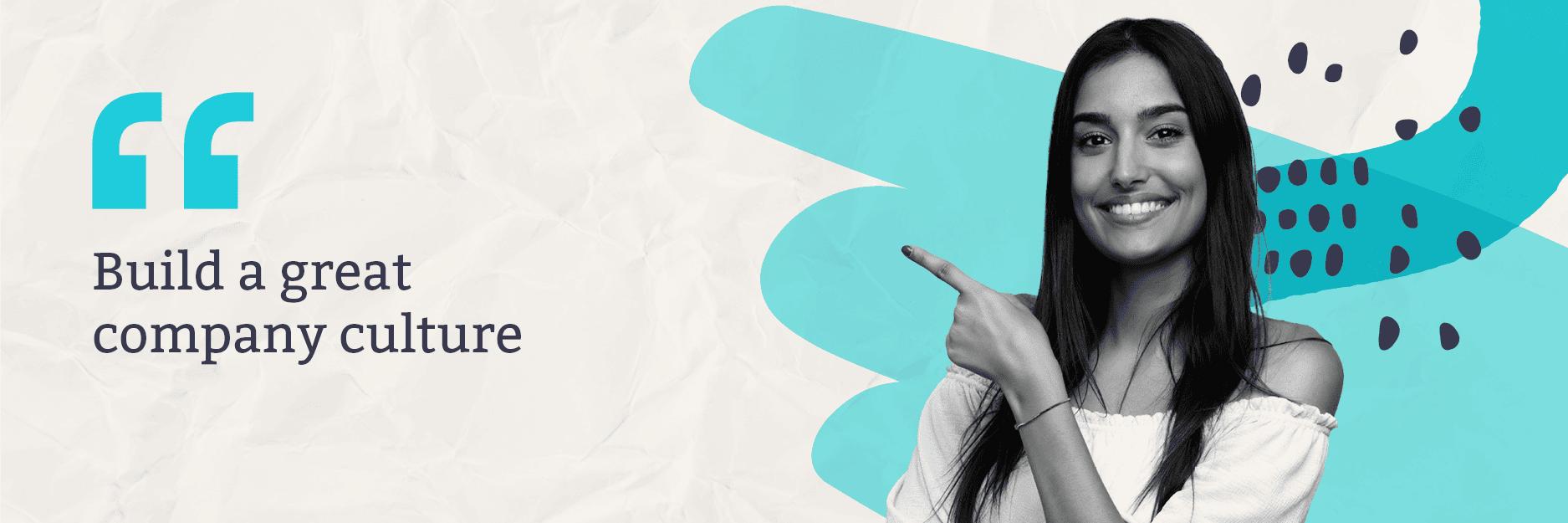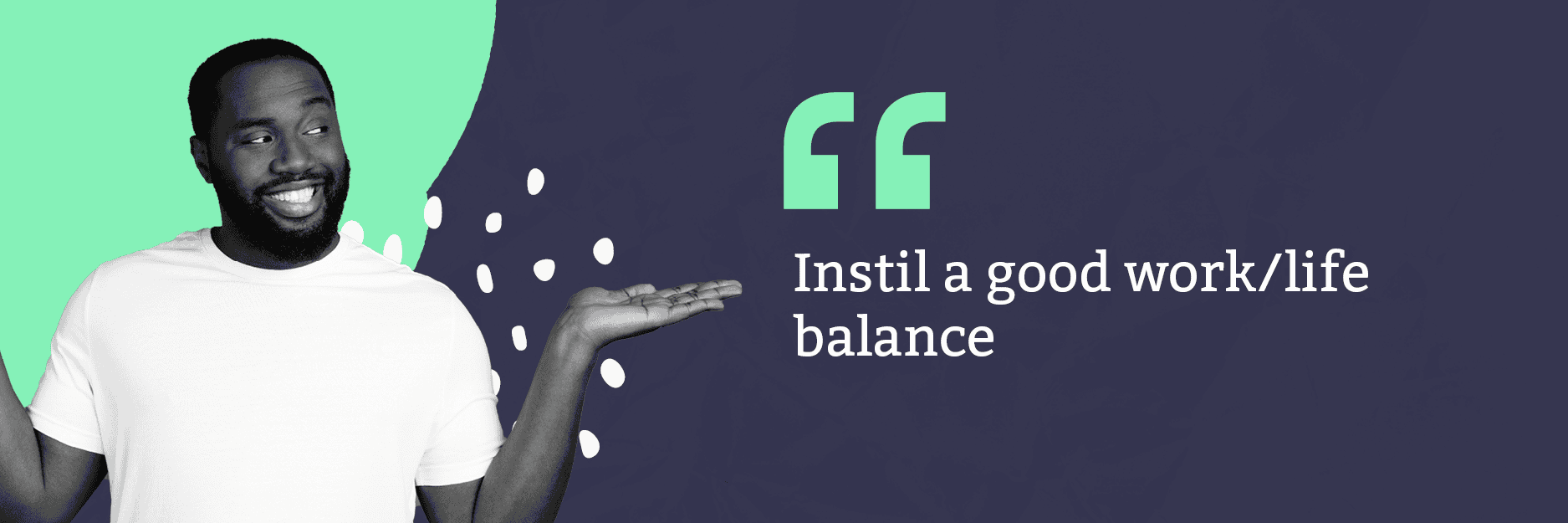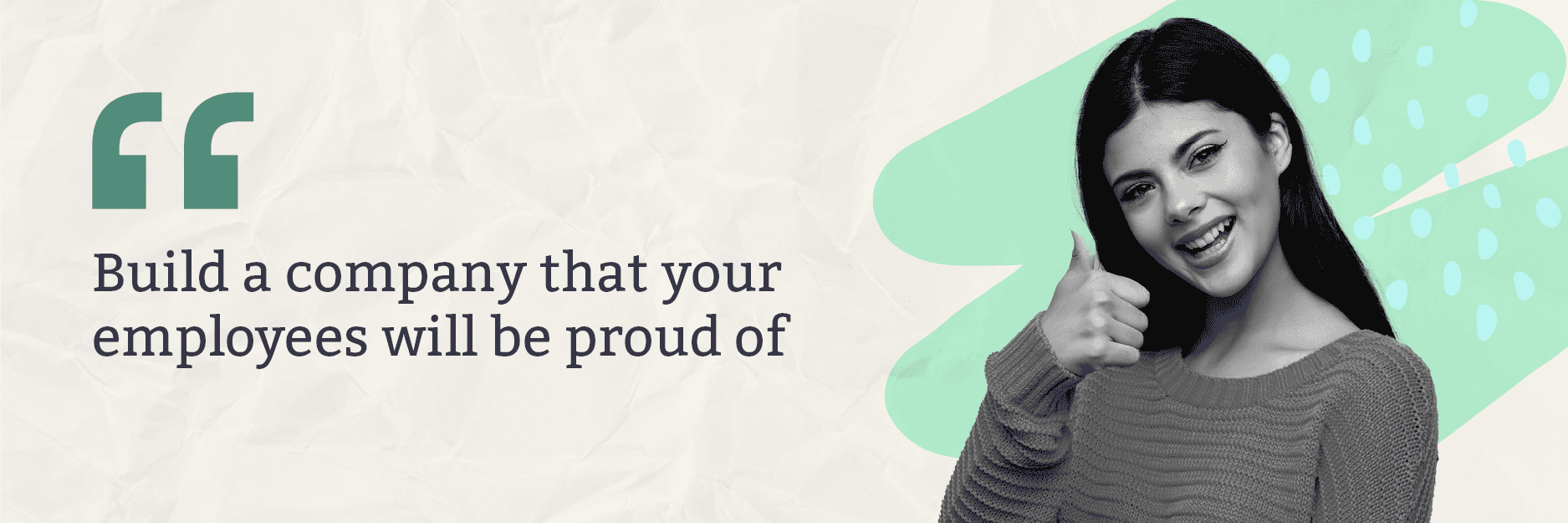How To Build a Great Employee Experience at a Scaling Company

Barry Nyhan
Senior Demand Gen & Marketing Ops
11 Sept 2021

The following article is from our friends at Cognism. Hannah Bates, their Head of People, shares her thoughts, opinions, and experiences on building a great employee experience
Building a great employee experience is not easy, especially when you’re scaling. And even more so when you’re navigating the shifting economic landscape brought about by the pandemic.
However, Cognism think they’ve cracked it. In January 2019, they had 128 employees; today they have 258. And in contrast to the industry standard of 50%, their employee retention rate is above 90%.
What’s behind these impressive figures?
It’s nothing less than a commitment to making not just a great place to work, but a great place to grow both professionally and personally.
Hannah Bates is Cognism’s Head of People. We asked her how she’s gone about building a great experience for the company’s workforce, from when they first apply for a job to everything that comes after.
1. Create a great recruitment experience
“In my opinion, the employee experience starts from the moment someone goes to your website and clicks on ‘Apply for job’. You have to hit all the right touchpoints from beginning to end.”
“So you have to make sure from the word go that you’re delivering a great experience for the people you hire, and for the people you don’t. The people you turn down are still important – we want to have a good reputation in our industry. We want to be people’s first stop for a fulfilling career.”
Hannah’s top tips for building a great recruitment experience:
- Ensure every candidate is communicated with, whether they’re successful or not – if someone spends a lot of time on their application and they never hear back, they’re not going to speak fondly to their next employer about their employee experience. That creates bad word-of-mouth about the company.
- Manage expectations at every stage of the process – make every candidate aware of the recruitment process and how long each stage is expected to take. If possible, give accurate timescales for things like arranging interviews, making the final decision, giving feedback, etc.
- Pay attention to how you present your recruitment materials – if a candidate downloads a job spec and it isn’t branded to your company, it isn’t formatted right and there are things like typos, or bits are missing, then that doesn’t present your company in a good light.
Hannah believes “The aim is to provide a polished recruitment experience that benefits the HR team and candidates alike.”

2. Provide a great onboarding experience
Onboarding new employees has never been more of a challenge. A good deal of Cognism’s employees are still working from home due to national guidance or legislation.
How does Hannah ensure the onboarding experience is as good as can be?
“The first thing you have to do, as a Head of HR, is think about what every new employee wants to know on their first day. For most people, it’s two things. Where am I meant to go? And what am I meant to be doing?”
“When the pandemic struck, we tightened up our welcoming process. We implemented HowNow, which is an excellent learning management system. It helped us to automate the onboarding process and make it consistent across the company. This was especially useful for us as a scaling company – on some days, we’ve welcomed large numbers of new joiners, all in different departments.”
“So with a tool like that, we were able to get the right information to the right people quickly. It’s meant that our new starters, some working in locations very far apart from each other, can hit the ground running on Day 1 with things like logins, priorities, important people in the business, etc.”

3. Offer good opportunities for learning and development
At scaling companies, people are often promoted faster than their corporate peers. As a consequence, they may not quite have the experience to be successful at managing people and their workloads.
How does Hannah ensure that leaders have the right learning and development resources?
“The number one thing is to allocate a portion of your budget for training. It’s about putting the appropriate resources in place for people who are making that next step up. Currently, we’re working on a defined learning pathway for our new managers. That’s something we’ll be bringing in very soon.”
“We also encourage our leadership team to work with mentors outside of the company. I think people can learn a great deal from their peers, so we use that external knowledge to our advantage. For example, we’ve set up coaching sessions for our sales leaders, delivered by people from companies that have already scaled successfully.”
Hannah had this to say about learning and development:
“You should look at L&D like another employee benefit; people really value knowing they’re going to be invested in. Our sales team has a very established training program, and that’s great for attracting new talent. It means people come to us because they know we’re going to help them develop their skills quickly.”

4. Keep communicating with your staff
With face-to-face meetings still on pause and most departments working from home, communication has never been more important for scaling companies.
How has Hannah and her HR team managed this?
“As a HR department, we want to always be there for people. A lot of what we do is based around communication – keeping our staff informed about every major decision and change of strategy.”
“The danger is if you don’t do that, you’ll end up with every department working in silos, with no knowledge of what each other’s doing. That’s obviously very bad for a business. So it’s really important to keep on top of communication.”
What methods do you use to speak with employees?
- Regular emails – during the pandemic, we’ve sent email updates, including things our employees can do to stay well.
- Monthly townhalls – every month, we get every department to present their results and their future initiatives.
- Slack channels – we’ve opened Slack channels to encourage employees to talk to each other about things outside of work, or set up coffee meetings over Zoom.

5. Keep listening to your staff
Talking is one side of the communication coin; the other side is listening!
Pre-pandemic, Forbes identified that employees who feel listened to are 4.6 times more likely to perform at their best.
Post-pandemic, the issue of listening to and engaging with employees is even more acute.
Hannah told us:
“When it comes to employee engagement, I look at it like this: if people feel valued and looked after, then they’re more likely to engage with the work they do. Listening to your workforce is absolutely critical if you want people to ‘buy into your company; it fosters commitment and dedication.”
“That said, it mustn’t be a one-way thing. It isn’t enough to just listen; you have to act on your employees’ concerns.”
“A good example of this is mental health and well-being. We sent out a survey and the feedback we received was that we weren’t investing enough in it. So we introduced Spill, which is a mental health counseling service integrated via Slack.”
“You can see it’s about giving your employees a voice. As an HR team, our mission is to be an objective and impartial judge of what they tell us. If people have concerns or want to share their ideas, we’re completely open to that.”
What routes are open to employees for giving their feedback?
“We have a range of routes. We regularly send out employee surveys on things like future office space, benefits, and hybrid working. We have HR Slack channels and a separate anonymous channel for people to submit their concerns. The whole HR team has an open-door policy – anyone in the business can come to us if they’re worried about something.”

6. Build a great company culture
Building a great culture is something easier said than done, with most of the Western world being stuck in lockdown for a year or more!
Hannah said:
“It has been difficult with remote working. Pre-COVID, we were a very sociable company. Our hands have been tied on what we can do, but we’ve done our best to provide our staff with remote activities.”
“Some things we’ve tried were weekly workout sessions at the start of the UK’s first lockdown, virtual escape rooms, and cocktail-making.”
“We realized – again from employee feedback – that working from home quickly became not fun for a lot of people. It just became all about the work, with no opportunities for our staff to socialize and get to know each other.”
“To counteract this, we encouraged people to follow an initiative called ‘No Meeting Fridays’ – to give people breaks from endless Zoom calls and being on camera every day.”
“We also ran some company challenges around things like fitness and exercise – again, this was a way of getting people to interact with each other ‘outside of work.’”
What benefits does having a great culture bring to a company? Hannah told us:
“Our employees are very active on LinkedIn and social media. We really rely on them to refer candidates to us and get our name out there as a great employer. If our workforce has positive things to say about us, then it’s only going to build our profile and more people are going to want to work for us.”

7. Instil a good work-life balance
Hannah had lots to say about this.
“Our employees tend to be very passionate and ambitious people. They’re passionate about the product and working together to scale the business.”
“But everyone, even the most dedicated, needs a break. One issue we encountered last year was that because people couldn’t travel aboard, their knee-jerk reaction was to cancel their holidays. What was happening then was, because people weren’t taking holidays, they were starting to burn out.”
How did Hannah’s HR team solve this problem?
- They reminded people why they need to take holidays – it’s no good to just carry on working; if you over-work, it can negatively impact your performance.
- They set targets for the number of holidays people had to take by a certain point in the year – this gave our staff clarity and enabled them to book breaks with confidence.
- They extended the carry-over window – that is, we increased the number of days people could carry over from one year to the next.
- They asked their line managers to keep reminding people about holidays – we noticed that people were more likely to book holidays after being encouraged to do so in 121s and team meetings.
- They gave their entire staff an “Independence Day” – this was a special holiday that didn’t come out of people’s yearly allocation.
“Beyond holidays, it was a matter of encouraging people to use the extra time they had during the lockdown. For example, we suggested replacing morning and evening commutes with a walk or run. This helped to keep our staff fit and healthy and to take them out of constantly being in work-mode. That’s great for work-life balance!”

8. Build a company your employees will be proud of
It all comes down to diversity and inclusion. Hannah explained more about this in relation to the employee experience.
“Everyone wants to work for a company that they feel proud to work for. If you don’t feel that sense of pride, you might feel disconnected from the company.”
“So we’ve put diversity and inclusion at the front of our thinking. Sometimes it means challenging the way people think. You have to ask uncomfortable questions, even of yourself – do I have an unconscious bias that I wasn’t aware of?”
For Hannah, issues of diversity and inclusion start right at the beginning of the employee experience.
“You have to challenge your assumptions at every stage. If we’re recruiting for an SDR, do we ask for a degree? Does an SDR really need a degree to succeed in the role? By asking for that, you’re inevitably ruling people out.”
“Job advert wording is important too. Certain words appeal more to males than females – you have to be careful that you’re not unconsciously promoting a role as being for men only.”
“We’re lucky in that we’ve had lots of women being promoted into senior roles. That’s great for visibility – women in junior roles can see there’s no glass ceiling here.”
“But we’re not content to rest on our laurels. This year, we’ve made diversity and inclusion much more a part of employee engagement generally. We’re using all our communication channels, including HowNow and Slack, to empower our employees to learn more about each other – about the hobbies they have, the causes they support, and the different religious holidays they celebrate.”
A massive thank you to Hannah for her time and insights in paving the way for a great employee experience. The employee experience is undoubtedly one of the most important aspects of retaining great staff and building a world-class culture.